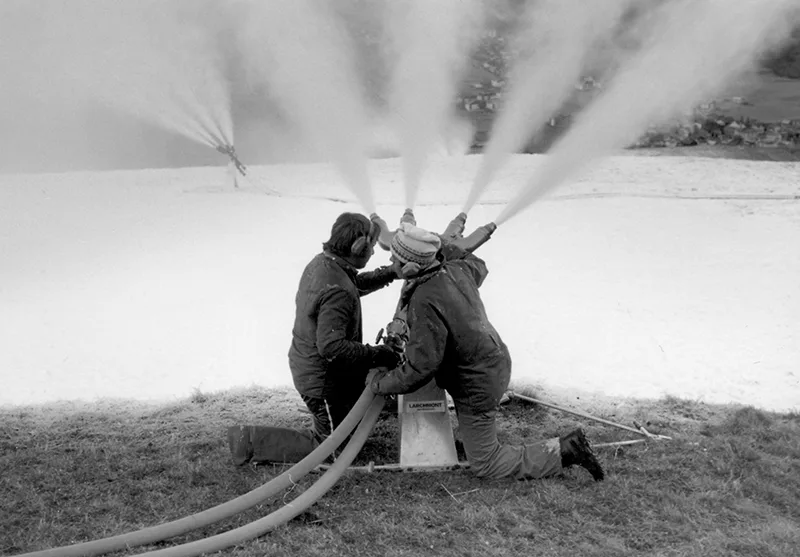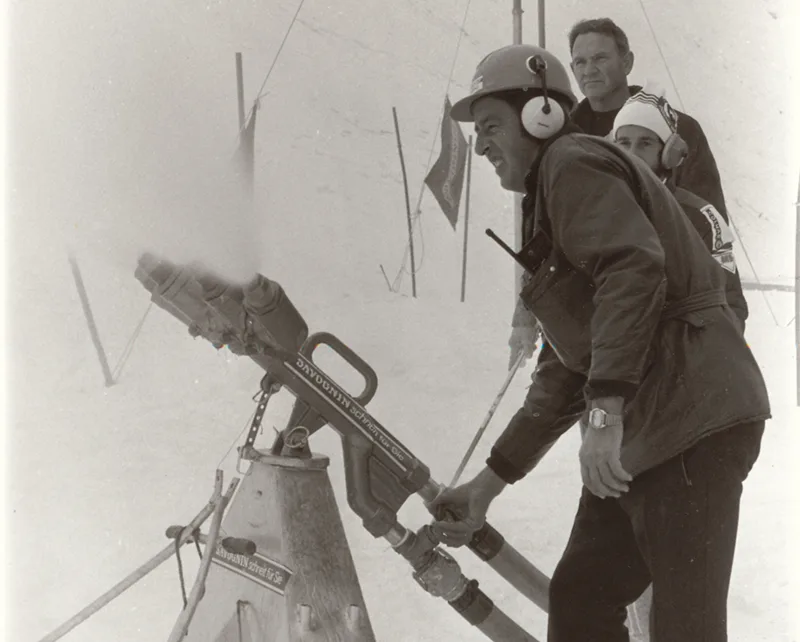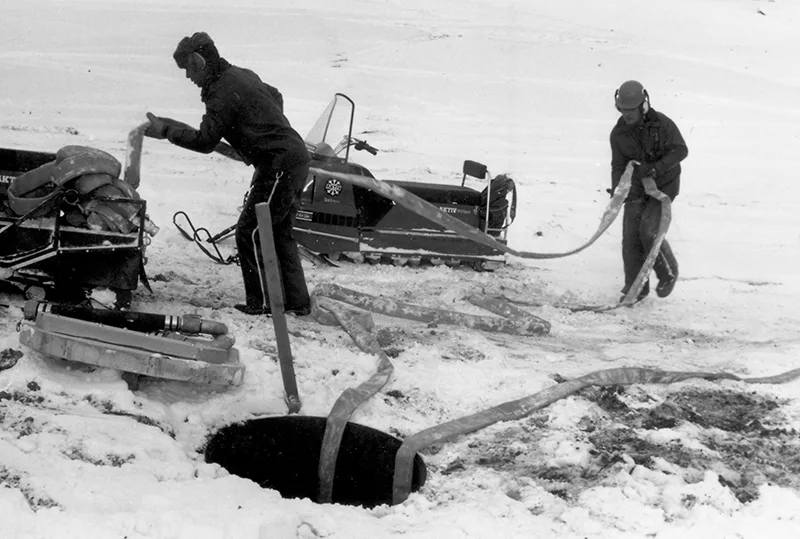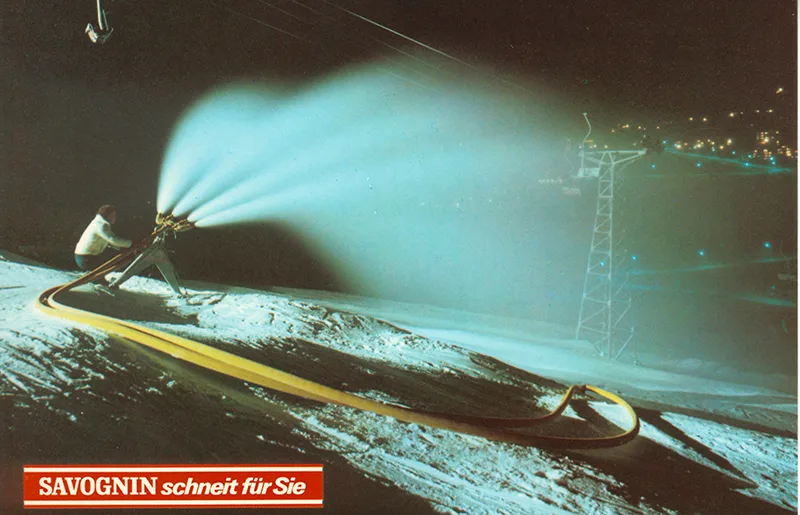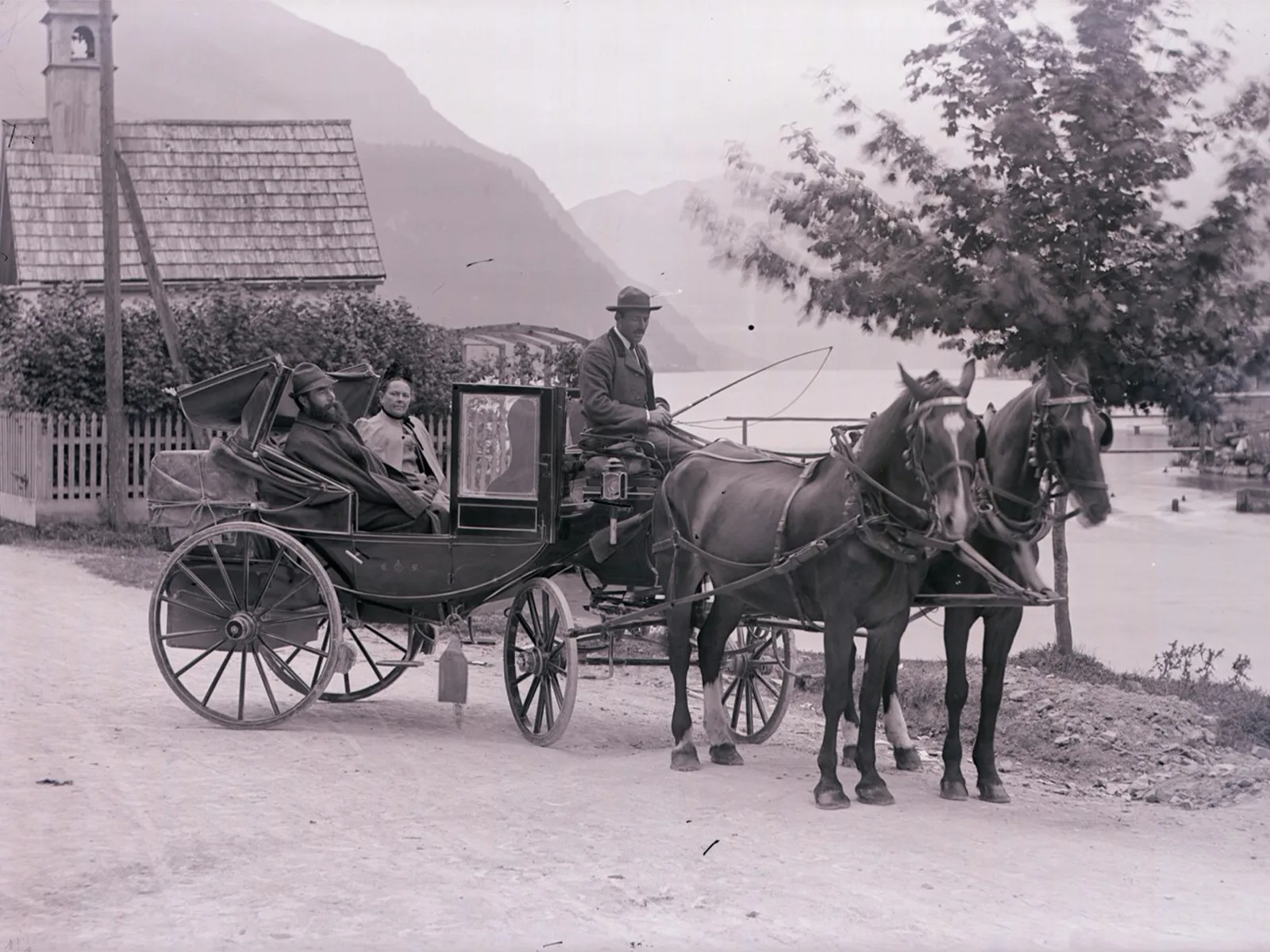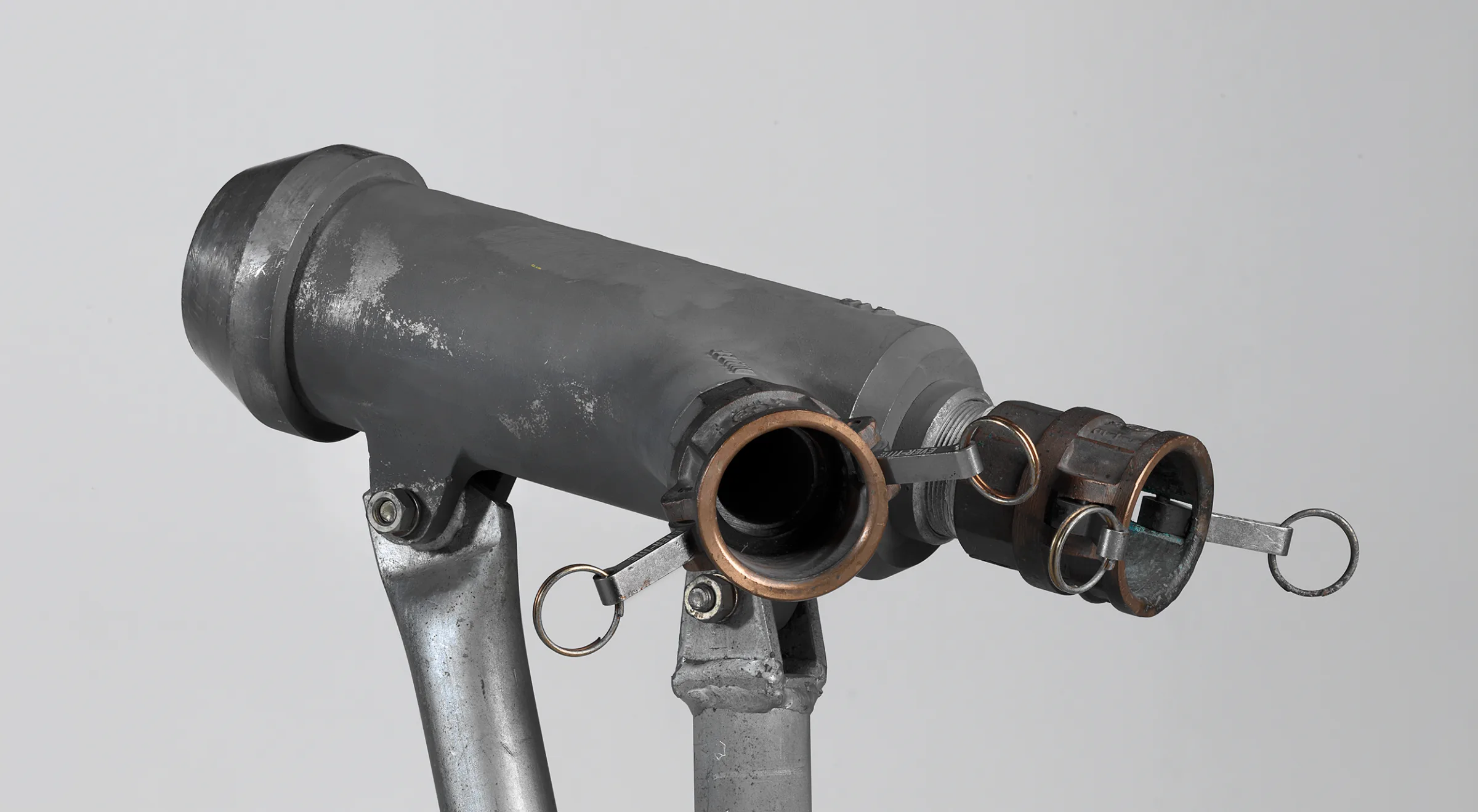
Out of the blue sky
In December 1978 the whole of Switzerland was snow-free. Only in Savognin did the flakes dance - thanks to the first snow cannons.
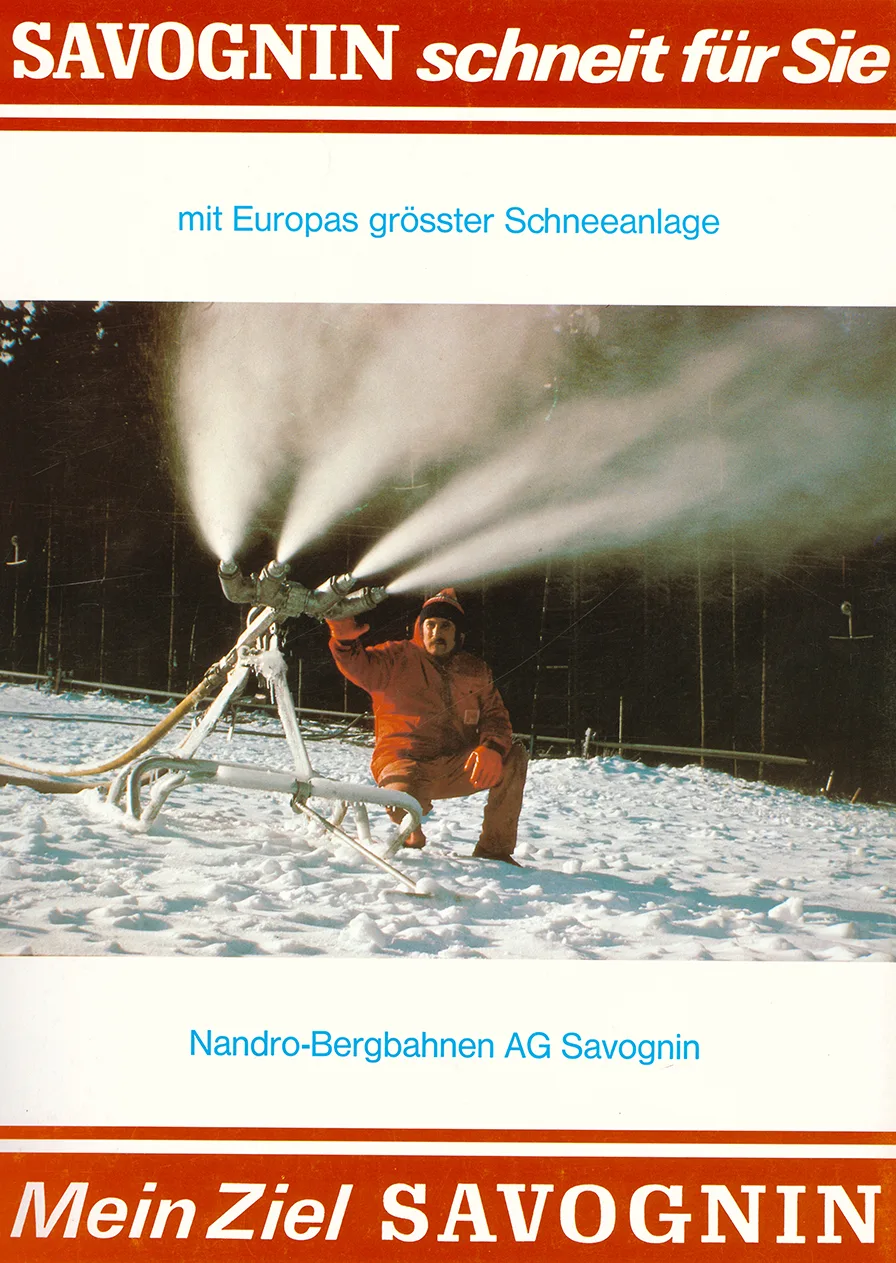
“Switzerland’s peaks are virtually devoid of snow, but in Savognin the snow falls from clear skies,” wrote the Bündner Tagblatt on 9 December 1978. On that day, ten snow cannons provided enough snow for a three-kilometre piste on a green slope in the canton of Graubünden. When the first major artificial snow-blowing system in Europe went into operation, this marked the dawn of a new era in winter tourism.The snow cannons that caused a stir at the time are taken for granted today in every skiing resort of any size.
Snow cannons were invented in Canada in 1940, when a team of researchers was studying the icing up of jet engines in a wind tunnel. While spraying water into a running turbine at sub-zero temperatures, the scientists had to contend with an undesirable side-effect: snow, which kept accumulating at the rear of the wind tunnel. What was an annoyance to those early researchers later became one of the biggest innovations in winter sports.

A small review of the first use of the snow cannons 1978 in Savognin. © Savognin Bergbahnen AG

